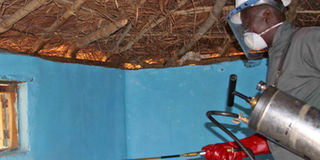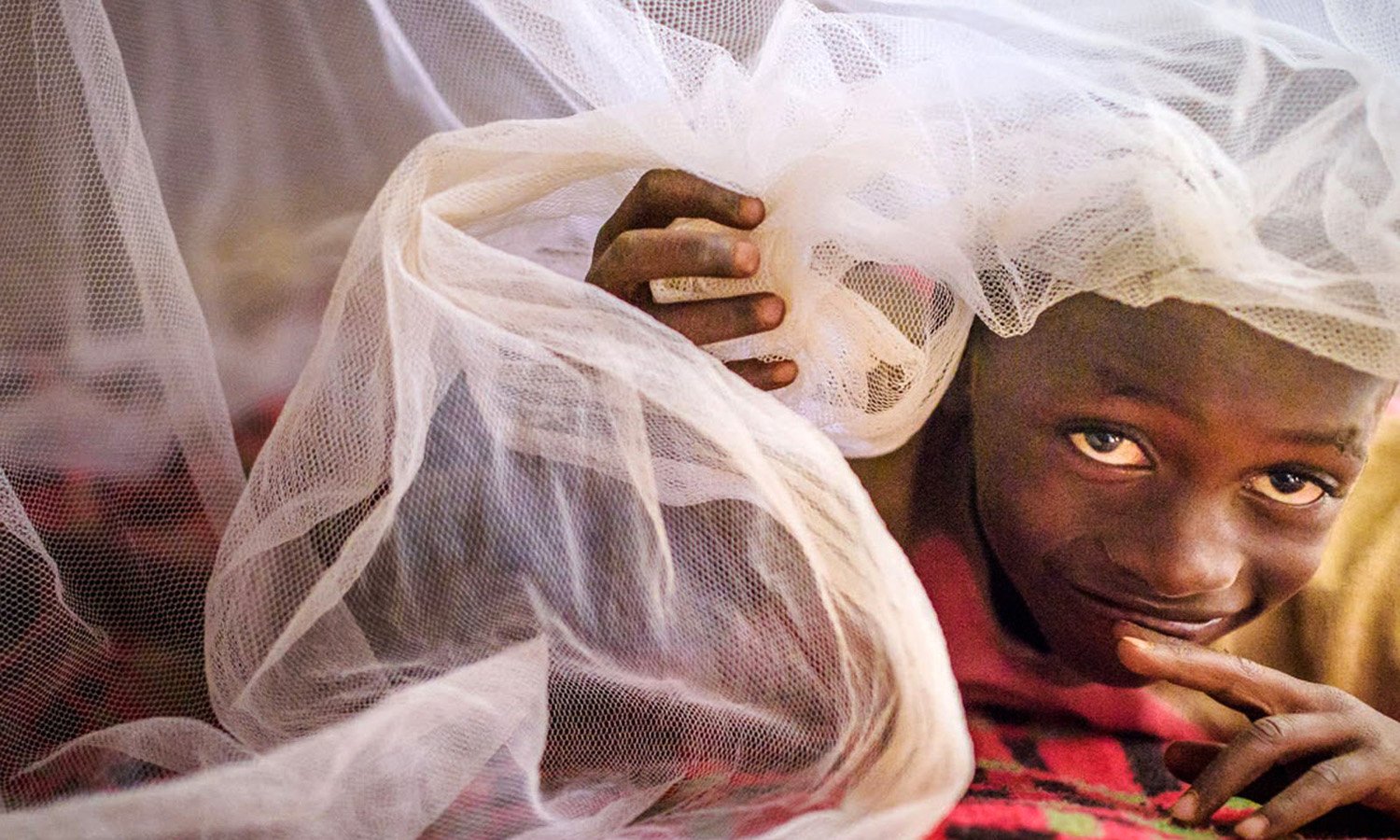Anti-malaria efforts get a shot in the arm

A man sprays a house during a sample demonstration of indoor residual spraying in Dokolo District recently. Recent reports show malaria has declined in areas exercising indoor spraying. PHOTO BY Hudson Apunyo.
What you need to know:
US President Barack Obama has offered Shs40 billion to boost the fight against malaria in 15 sub-Saharan countries.
Kampala
Uganda is one of the 15 countries that will benefit from a $14,265,000 (Shs35.9b) grant to scale up the fight against malaria.
The money, announced through the US President’s Malaria Initiative (PMI), will pay for indoor residual spraying in Kitgum, Lamwo, Pader, Agago, Apac, Kole, Oyam, Gulu, Amuru and Nwoya districts, which have the highest malaria transmission rate in Uganda.
About 850,000 houses will be sprayed and more than three million people will be protected, according to the project documents seen by this newspaper. Under the plan, 1.2 million free insecticide-treated nets will also be procured and distributed nationwide through antenatal care clinics.
This is expected to almost double the number of households with mosquito nets from 47 per cent to 85 per cent. Intermittent preventive treatment of pregnant women will also be provided with on-site training to health workers in public and private antenatal clinics.
The PMI was launched in June 2005 as a five-year initiative to scale up malaria prevention and treatment interventions and reduce malaria-related mortality by 50 per cent in 15 high-burden countries in sub-Saharan Africa.
Part of the plan indicates that Uganda was selected as one of the first three countries to benefit from PMI.
Malaria is Uganda’s leading cause of death and according to the Ministry of Health, accounts for up to four in every 10 people who visit health facilities.
Recent studies show malaria rates have started declining in areas of northern Uganda, where indoor residual spraying has been conducted.




